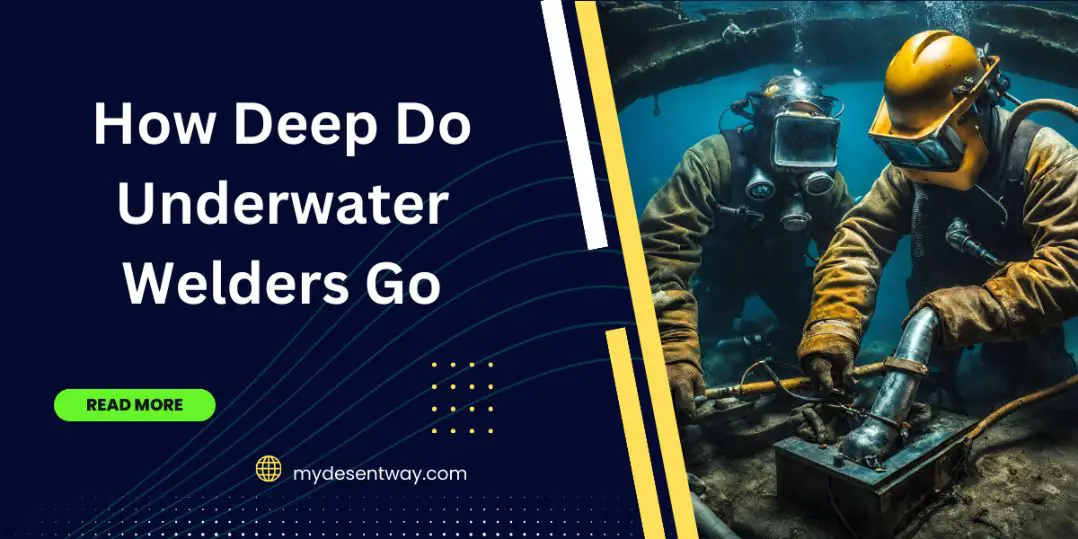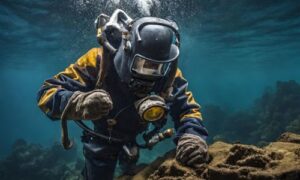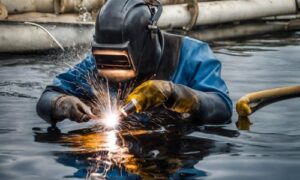Table of Contents
- The Depths of Underwater Welding
- Training and Skills Required
- Technology and Equipment Used
- Safety Measures and Protocols
- Career Opportunities and Rewards
- What’s deep underwater welding called?
- The Challenge: The Difficulty of Underwater Welding
- Duration Underwater: How Long Can Underwater Welders Stay?
- Ocean Depths: How Deep?
- Conclusion
- FAQs about How Deep Do Underwater Welders Go
Underwater welding stands as a fascinating and challenging profession that involves welding and repairing structures immersed in water bodies. Its origins trace back to the early 20th century when the need arose for repairing ships and underwater structures. This specialized field demands unique expertise due to the intricacies of working in an underwater environment. How Deep Do Underwater Welders Go? Discover the Incredible Depths They Tackle!
The Depths of Underwater Welding
Shallow vs. Deep Diving
The depth at which underwater welders work varies significantly. Shallow diving typically involves depths of up to 200 feet, while deep diving can extend beyond 1,000 feet or more. Deep water welding presents greater challenges due to increased pressure and complexity, requiring specific techniques and equipment.
Challenges and Risks in Deep Water Welding
Working in deeper waters introduces higher levels of pressure, which necessitates advanced training and specialized equipment. The risks associated with deep water welding include decompression sickness and the need for meticulous planning to ensure safety and success.
Training and Skills Required
To become an underwater welder, one must undergo extensive training and earn certification. Individuals pursuing this career undergo specialized education focusing on welding techniques, diving skills, and safety protocols. Technical skills such as welding in different environments and understanding underwater conditions are imperative.
Technology and Equipment Used
Underwater welding relies on specialized gear and advanced technology to facilitate the welding process in challenging underwater conditions. Innovative equipment, including wet and dry welding systems, helps welders perform tasks efficiently and effectively.
Safety Measures and Protocols
Safety remains paramount in underwater welding due to the high-risk nature of the job. Welders adhere to stringent safety protocols, including thorough equipment checks, pre-dive assessments, and continuous monitoring during operations.
Career Opportunities and Rewards
Despite the challenges, underwater welding offers promising career prospects. The demand for skilled professionals in this field continues to grow, presenting opportunities for lucrative compensation and a unique lifestyle that combines welding expertise with diving adventures.
What’s deep underwater welding called?
The process of welding at considerable depths is often referred to as Hyperbaric Welding or Saturation Diving. These terms encapsulate the specialized techniques and equipment required for such ventures.
The Challenge: The Difficulty of Underwater Welding
Becoming an underwater welder demands resilience, skill, and a high level of adaptability. It’s a physically demanding job that requires extensive training and experience. The pressure, literally and figuratively, is immense.
Duration Underwater: How Long Can Underwater Welders Stay?
The duration of time spent underwater varies based on several factors. Generally, dives can last anywhere from a few minutes to several hours. However, saturation divers, equipped with specialized accommodations, can stay submerged for days or even weeks at a stretch.
Ocean Depths: How Deep?
When it comes to the ocean, the depths that underwater welders encounter can be awe-inspiring. Some projects delve into the abyssal plains, reaching depths of 4,000 meters (13,000 feet) or more. These ventures require meticulous planning and cutting-edge technology to ensure success.
Conclusion
The world of underwater welding delves into depths that challenge both skill and courage. From the intricate techniques required for welding at varying pressures to the stringent safety measures, this profession demands a unique blend of technical prowess and adaptability.
FAQs about How Deep Do Underwater Welders Go
What depths do underwater welders typically work in?
Underwater welders can work in shallow depths up to 200 feet or dive deeper, surpassing 1,000 feet in some cases, depending on the project’s requirements.
What are the main risks associated with deep water welding?
Deep water welding poses risks such as high pressure, decompression sickness, and the need for meticulous planning to ensure safety.
How does one become an underwater welder?
Becoming an underwater welder involves specialized training, certification in welding and diving, and acquiring technical skills relevant to underwater conditions.
What equipment is used for underwater welding?
Underwater welders utilize specialized gear like wet and dry welding systems, along with advanced technology tailored for underwater welding projects.
Are career prospects promising for underwater welders?
Yes, the demand for skilled underwater welders continues to increase, offering rewarding career opportunities with competitive compensation.





9 thoughts on “How Deep Do Underwater Welders Go: Click to Explore”